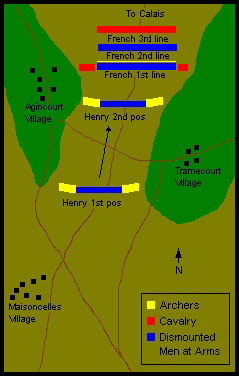 On this Day ...
On this Day ...
Nine hundred and forty years ago a combined Norman, French and Breton force defeated an Anglo-Scandinavian force in , arguably , the most famous battle to take place on British soil – Hastings. Whilst the result was devastatingly clear-cut, this battle seems to me at least, to have two strange features.
Firstly , for battles of the time , or indeed any but modern times , it had an extraordinarily long duration - around nine hours. Secondly, Hastings has entered the imagination as a battle between English infantry and Norman mounted knights – Norman infantry get scarcely a mention and indeed are all but invisible in the Bayeaux Tapestry.
For what it's worth I’d like to suggest that the first of these features – the unusually long duration of the battle – is actually a consequence of the second – the ‘absence’ of Norman infantry.
Here I am talking specifically about ‘heavy’ infantry – men whose armour included the full 30 pound metal hauberk , full-length metallic ‘kite’ shield or rounded metallic shield , Spangelhelm helmet and a heavy cutting, slashing or thrusting weapon suitable for close combat – i.e. a sword, dagger or battle-axe ( although the latter seems exclusively English ).
Almost without exception, accounts of other Norman military engagements stress the role played by mounted knights. This seems to be a reflection of Norman society. Each of the French Dukedoms / Counties could not compete with the wealth and manpower available to the English. What wealth there was was concentrated on a relatively few individuals who chose to invest in the full panoply of military hardware both for their own protection and as a status symbol – and what better way to ensure both of these than to fight on horseback ?
These individuals required retainers – squires to tend their horses and also a small personal bodyguard. By definition these retainers could not afford to finance all their own equipment – what they supplied was their loyalty. Is it not unlikely that in times of conflict these retainers formed an (inexpensive) force of archers and lightly-armed infantry (skirmishers) ?
Hand to hand combat is hard physical effort combined with high emotional stress. Such contests could not last long before both sides were physically exhausted – it has been estimated that they only lasted around 15 minutes before one or both sides retreated a few yards to recover before resuming the contest. Normally the whole confrontation would be over in around an hour , with one side breaking and being routed.
So why did the battle last so long ? I think it was because the Normans/French had
no heavy infantry. They employed archers and skirmishers to run forward , fire a volley of arrows and javelins but not actually close with the English ranks. This was done repeatedly to disrupt the English formation by causing casualties before the main battle, and to tempt the opposing infantry into attacking prematurely. If they did so, the skirmishers engaged them in a melée supported by the cavalry ( this is an alternative interpretation of the ‘feigned retreats’).
This tactic was alternated with full cavalry charges (in their turn also supported by the skirmishers).
Whilst this approach gradually thinned the English ranks throughout the course of the day, it still required a climactic hand-to-hand contest at the very end. Here it seems likely that some of the Norman knights were fighting on foot as heavy infantry either by accident – they had been unhorsed - or by design as part of a ‘final push’.
Both sides faced a battle like no other they had experienced. The English had never faced large numbers of determined and skilled cavalry before and thus adopted a defensive densely packed formation ( which made sense) . The Normans were used to raids, chevauchée (terrorising) and sieges and approached the obstacle accordingly, using mobility and disruption.



